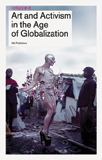 |
Art and Activism in the Age of Globalization, Lieven de Cauter, Ruben de Roo & Karel Vanhaesebrouck (eds.), Rotterdam, NL: NAi Publishers, 2011.
I have always been intrigued with the mechanisms that drive political and activist art. Can art really have an impact on society? Is going political a way to justify a seemingly meaningless practice? But most importantly, how do these practices extend to other disciplines such as social work, documentary film and advocacy? Art and Activism in the Age of Globalization gathers a selection of 31 essays by a group of critics and writers that address the ways these practices have surfaced in the past decades, influenced by globalization, terrorism and migration. The essays range from theoretical approaches (considerations on post-fordism, subversion and activism) to specific case studies (writings on works by Steven Cohen, Renzo Martens and Christoph Schlingensief); issues and projects worth considering and exploring given the rising popularity and commodification of political art.
|